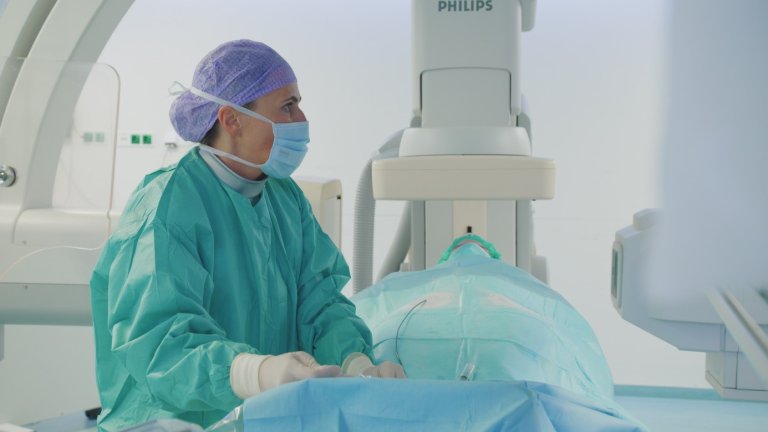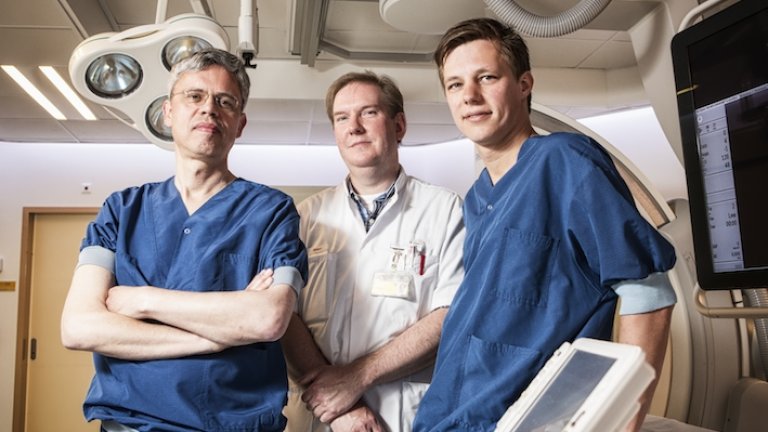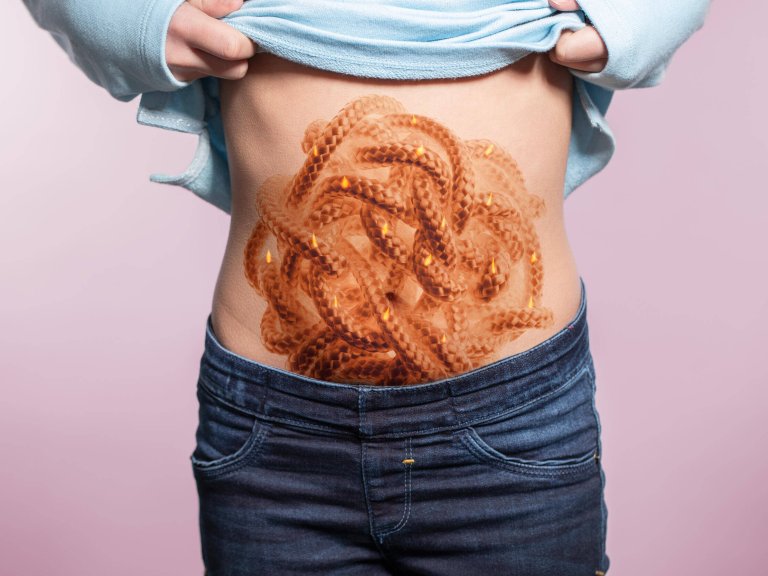When Charles Majoie (59) is called up from home to remove a blood clot from a brain, he jumps in his car and drives to Amsterdam UMC 'at the double'. Every lost minute can have devastating consequences for a stroke patient: paralysis, loss of speech, cognitive decline. It is vital to open up that blocked blood vessel so that the affected part of the brain gets the oxygen it needs.
That's why Majoie stepped harder on the gas than usual when, not so long ago, he drove to Amsterdam UMC on a middle-of-the-night call. ‘A woman of around 50 had suffered a major stroke’, says Majoie, Professor of Neuroradiology at Amsterdam UMC. ‘When I got there, her arm was already paralyzed, and her speech was confused.’
Via the woman's groin, he inserted a thin catheter into an artery and navigated it through her body to the site of the clot in her brain. Majoie then captured the clot with a tiny mesh at the end of the catheter and pulled it back out via the groin. He leaned forward a little to view the content of the miniscule net: a blood clot a couple of millimeters in diameter. ‘I asked the woman to squeeze my finger. Using the hand that had only just before been paralyzed, she immediately did so, and quite firmly, too. And she started to speak again.’

Animation: Stryker
A sizable blood clot
In 2015, Majoie demonstrated the effectiveness of this treatment involving cerebral angioplasty. He did so together with Yvo Roos, Professor of Acute Neurology at Amsterdam UMC, and researchers from Erasmus MC and Maastricht UMC+. Thanks to their MR CLEAN study, which was published in the New England Journal of Medicine, this type of treatment is now carried out across the globe.
Until the MR CLEAN study demonstrated that a thrombectomy is effective, there was only one treatment available for stroke victims: administering clot-dissolving drugs with a drip
Until the research conducted by Majoie and Roos demonstrated that a thrombectomy, as it is called, is effective, there was only one treatment available for stroke victims: administering clot-dissolving drugs with a drip. “This is inadequate in the case of major stroke victims", Roos explains. “The clot blocking the artery in the brain is then so large that it will respond little if at all to such drugs." Thrombectomy gave these people a whole new perspective. “It helps one in three to recover."

Every minute counts
Publication of the MR CLEAN study massively boosted further research. “Almost all this research focuses on saving time as an essential goal", Roos explains. “In the current situation, people with a major stroke are first given a drip with clot-dissolving drugs, and only treated by thrombectomy afterwards. Administering clot-dissolving drugs can easily take 30 to 60 precious minutes. And apart from that, there is always a risk of bleeding.
The research question of a current follow-up study by Amsterdam UMC is therefore: should major stroke patients not immediately be referred for thrombectomy?" Majoie and Roos expect to present the results of the study in May 2021, not least thanks to funding from the Netherlands Heart Foundation and the AMC Foundation. “We want to show that thrombectomy may give even better results without the prior administration of drugs."

Logistical changes
It is clear that patients now have far better prospects than five years ago. At that point, one in three people in the Netherlands were able to function independently again after a stroke. Currently, that figure is a good four out of ten. Roos emphasizes that this improved perspective is largely thanks to logistical changes. During the MR CLEAN study, he had already taken the initiative, together with Majoie, for StrokeNet, a partnership of ambulance services, regional hospitals and Amsterdam UMC. The objective is to get major stroke victims to Amsterdam UMC as quickly as possible – this being the only location where thrombectomy is performed in and around Amsterdam.
This is supported by the use of an AI-driven software product from NICO.LAB, a start-up originating from Amsterdam UMC. Majoie: ‘With this software, brain scans can be assessed in a matter of minutes, and then forwarded to us directly.’

Diagnosis in the ambulance
What will be the next major breakthrough in stroke patient care? Roos: ‘Already making the diagnosis in the ambulance and sending the patient straight to the right hospital that can provide the best care: that will be the next big thing. Amsterdam UMC is conducting various studies on ways to do this. We are losing no time.’
Amsterdam UMC is conducting various studies on ways to already make the diagnosis in the ambulance. We are losing no time.
Gold Winkler medal
On December 17, 2020, Charles Majoie and Yvo Roos of Amsterdam UMC were awarded the prestigious gold Winkler medal for the MR CLEAN study.




